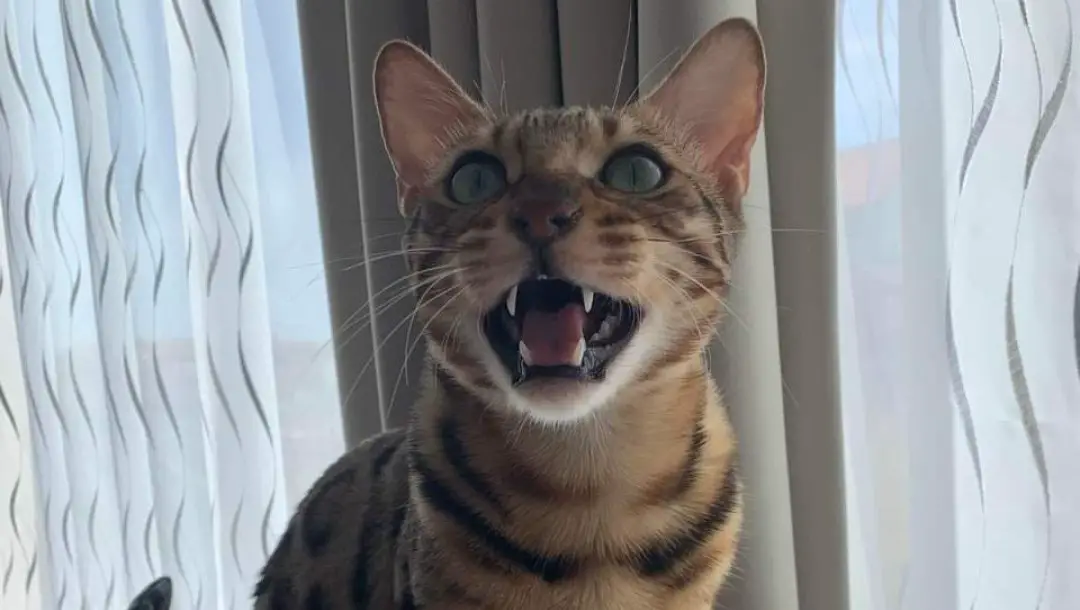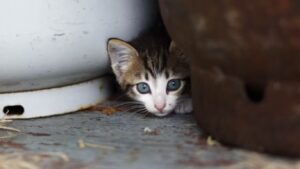In this post, I’ll be discussing some common behavior problems in cats, what causes these problems, how to address these behaviors, and finally how to prevent these behavior problems in cats.
I own a cat called Oscar, and I have also lived with two cats before Oscar, so I think it is wise to share some common cat behaviors that someone can consider a problem.
Before I wrote this post, I contacted some of my friends and some other cat owners to come up with this list, keep in mind that no one cat can display all the behaviors in this list.
Therefore, as cat personalities differ so will each come with its behavior concerns, but in all you are more likely to see these behavior problems in cats.
Behavior Problems In Cats
Based on my experience living with cats, here are some of the most common behavior problems in cats and how to address each:
Scratching furniture
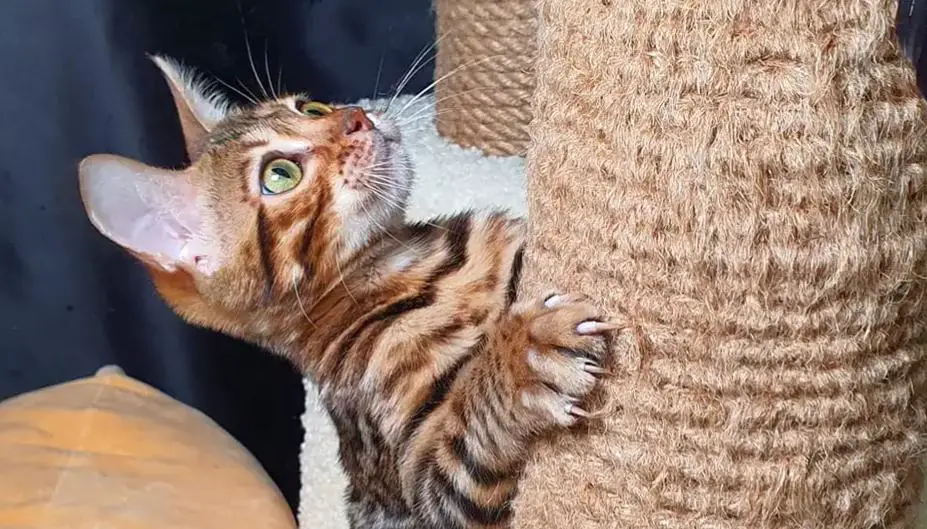
Based on my experience with cats, I can tell you that cats have natural instincts to scratch, and this is essential for maintaining their claws and marking territory.
However, when they choose your furniture as their scratching post, it can be frustrating.
Causes of this behavior
The main causes of this behavior can include:
- The need for exercise and stretching: All cats need physical activity and stretching to keep their muscles and joints healthy, and this can lead to unnecessary scratching of your furniture.
- Marking their territory: Scratching allows cats to leave visible and scent markings to claim their territory, which if not controlled can become a problem.
- Stress or anxiety: Most cats may resort to scratching furniture as a way to cope with stress or anxiety.
Identifying this problem in cats
If you want to observe or notice your cat scratching furniture excessively, look for these signs:
- Visible scratch marks on furniture.
- Frequent presence near the furniture they scratch.
- Vocalizations or signs of distress when you approach them near the furniture.
Addressing and fixing the behavior problem
Here are my suggestions on how to fix this issue:
- Provide two more appropriate scratching surfaces: To address this behavior, I suggest you offer your cat a variety of scratching posts and boards made of materials like sisal, cardboard, or carpet. You should place them near the furniture, they tend to scratch.
- Redirecting the cat’s attention from the furniture: Whenever you catch your cat scratching furniture, you should gently redirect them to the appropriate scratching surface and reward them with praise or treats, this will reinforce the use of scratch posts.
- You should use deterrents: To deter your cat from scratching furniture, you should apply double-sided tape or aluminum foil on the furniture to discourage scratching. Also, consider using pheromone sprays or diffusers to reduce stress and anxiety.
- Trim their nails regularly to reduce damage and need to scratch: Keeping your cat’s nails trimmed will minimize the damage caused by scratching.
Preventing this problem
Here are my suggestions on how to prevent this issue:
- Provide scratch posts early: Introduce appropriate scratching surfaces to your cat when they are young to establish good habits.
- Provide enrichment: Ensure your cat has enough mental and physical stimulation to prevent boredom and stress.
- Regular playtime: Engage your cat in interactive play sessions to burn off excess energy and satisfy their natural hunting instincts.
Excessive meowing
While most cats like Bengal cats are known for their vocalizations, excessive meowing can be bothersome and can quickly become a behavioral issue.
To deal with excessive meowing, understanding the causes and addressing them is crucial for both you and your cat’s peace of mind.
Possible causes of excessive meowing
In my opinion, here are the three possible causes of excessive meowing in cats:
- Attention-seeking: Most cats may meow excessively to get your attention from their owners, especially if they feel neglected or want food or playtime. My cat Oscar is good at meowing when he wants to get your attention.
- Medical issues: Certain medical conditions such as pain, hunger, or cognitive dysfunction can cause excessive meowing.
- Stress or anxiety: Changes in the environment or routine can lead to increased vocalization, especially if your cat is clingy.
Identifying this problem in cats
To determine if your cat’s meowing is excessive, consider the following:
- Frequency and intensity of meowing.
- Associated behaviors such as pacing, restlessness, or aggression.
- Changes in appetite or litter box habits.
Addressing and fixing this behavior problem
Here are my suggestions for addressing and fixing the behavior problem:
- Rule out medical issues: If your cat’s meowing is sudden or accompanied by other concerning symptoms, consult with a veterinarian to rule out any underlying medical conditions.
- Establish a routine: Provide your cat with a consistent schedule for meals, playtime, and attention.
- Respond appropriately: Avoid rewarding excessive meowing with attention or food. Instead, wait for moments of quiet or calmness to provide positive reinforcement.
- Provide mental stimulation: Interactive toys, puzzle feeders, and environmental enrichment can help redirect your cat’s attention and reduce excessive meowing.
- Create a quiet space: If your cat is stressed or anxious, create a safe and quiet space where they can retreat to when needed.
Preventing this problem
Here’s what suggest you do to prevent this problem:
- Regular veterinary check-ups: Frequent visits to the veterinarian can help identify and address any potential medical issues early on.
- Bonding and socialization: Spend quality time with your cat, providing affection and engaging in interactive play sessions.
- Gradual changes: When introducing any changes to your cat’s routine or environment, do so gradually to minimize stress.
Read more about cats whining at night.
Hyperactivity at nights
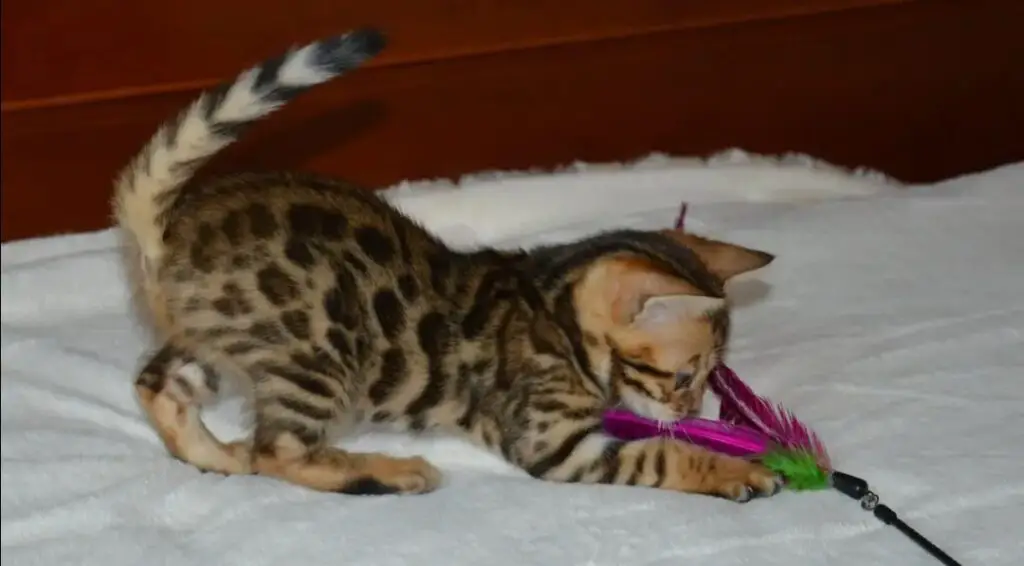
Most cats are naturally more active during the night, but excessive hyperactivity can disrupt your sleep and leave you exhausted.
Understanding the causes and implementing effective strategies can help address this behavior problem in cats.
Possible causes of hyperactivity at night
In my opinion as a cat owner, here are some possible causes of hyperactivity at night:
- Natural nocturnal instincts: Cats have evolved as nocturnal hunters, and their behavior may reflect this.
- Lack of mental and physical stimulation during the day: If your cat is not adequately stimulated during the day, they may become hyperactive at night.
- Environmental factors: Changes in the household, such as new pets or noises, can trigger nighttime hyperactivity.
Identifying the problem
To identify if your cat’s hyperactivity is a problem, look out for:
- Excessive running, jumping, or zooming around during the night.
- Vocalizations and scratching at doors or windows.
- Difficulty settling down or sleeping during the night.
Addressing and fixing the behavior problem
Here’s my opinion on addressing and fixing the behavior problem:
- Implement a consistent routine: Engage your cat in play sessions during the evening to help them release excess energy before bedtime.
- Provide mental stimulation: Puzzle toys, treat-dispensing balls, and interactive play can help tire your cat’s mind as well as their body.
- Create a calm sleeping environment: Ensure your cat has access to a quiet, comfortable sleeping area away from distractions and noise.
- Avoid reinforcing hyperactivity: Refrain from engaging with your cat during their hyperactive episodes, as this can unintentionally reward the behavior.
Preventing this behavior problem
Here are some common and effective ways of preventing this behavior problem:
- Establish daytime activity: Provide your cat with ample opportunities for play, exercise, and mental stimulation during the day to help regulate their energy levels.
- Incorporate routine into your cat’s schedule: Consistency in feeding times, play sessions, and bedtime can help establish a more predictable pattern of behavior.
- Consider interactive toys and puzzles: Toys that engage your cat’s natural hunting instincts can help keep them mentally and physically active during the day.
Avoiding litter boxes
Cats are generally clean animals, so it can be concerning when they start avoiding their litter boxes.
Even though most cats are litter trained, they can still avoid their litter box and this can quickly become a behavior problem for their owners.
Possible causes of this behavior problem
The causes of this behavior problem can vary, including:
- Litter box aversion: Most cats can develop aversions to their litter boxes due to unpleasant past experiences, such as a dirty or uncomfortable litter box.
- Medical issues: Underlying medical conditions, like urinary tract infections or bladder stones, can cause cats to avoid their litter boxes.
- Stress or anxiety: Changes in the environment, such as a new pet or a move, can trigger litter box avoidance.
Identifying this problem
To determine if your cat is avoiding the litter box, look for the following signs:
- Frequent accidents outside the litter box.
- Straining to urinate or crying while using the litter box.
- Excessive grooming of the genital area.
Addressing and fixing the behavior problem
Here’s my opinion on addressing and fixing the behavior problem:
- Rule out medical issues: If your cat’s litter box avoidance is sudden or accompanied by other concerning symptoms, consult with a veterinarian to rule out any underlying medical conditions.
- Provide a clean and comfortable litter box: Clean the litter box regularly and ensure there is enough litter for your cat to dig and cover their waste comfortably. Consider providing multiple litter boxes in different locations.
- Location and accessibility: Place the litter box in a quiet and easily accessible area, away from noisy appliances or high-traffic areas.
- Positive reinforcement: Praise and reward your cat when they use the litter box, reinforcing the desired behavior.
- Gradual changes: When introducing new litter or litter box types, do so gradually to prevent aversions.
Preventing this behavior
Here’s how to prevent this behavior in cats:
- Adequate litter box provision: Provide one litter box per cat, plus an extra one, to meet their individual needs.
- Early socialization: Introduce kittens to litter boxes early on and ensure positive experiences.
- Stress reduction: Minimize changes in the environment and provide a calm and enriched living space for your cat.
Obsessive grooming
Cats are known for their grooming habits, but excessive or obsessive grooming can become problematic.
Obsessive grooming can also create a problem for the cat by causing bald spots on the cat’s skin or leading to hairballs.
Possible causes of this behavior problem
The causes of this behavior problem may include:
- Stress or anxiety: Cats may resort to excessive grooming as a way to cope with their emotions.
- Skin irritation or allergies: Itching or discomfort can lead to excessive grooming.
- Boredom or lack of stimulation: Cats may groom excessively out of boredom or as a self-soothing behavior.
Identifying this behavior problem
To identify if your cat is engaging in excessive grooming, look for the following signs:
- Bald spots or patchy fur.
- Red or irritated skin.
- Frequent grooming sessions that seem excessive.
Addressing and fixing this behavior problem
In my opinion here are some effective ways of addressing and fixing the behavior problem:
- Rule out medical causes: If your cat’s excessive grooming is sudden or accompanied by skin issues, consult with a veterinarian to rule out any underlying medical conditions.
- Environmental enrichment around your cat: Provide interactive toys, scratching posts, and playtime to stimulate your cat’s mind and body.
- Stress reduction around your cat: Minimize stressors in your cat’s environment and provide areas where they can retreat to when feeling anxious.
- Grooming assistance: Regularly brush your cat’s fur to help remove excess hair and prevent matting. This can reduce the need for excessive grooming.
- Behavioral modification: Distract your cat from excessive grooming by redirecting their attention to toys or interactive play.
Preventing this behavior problem
Here’s how to prevent this behavior problem:
- Regular grooming routine: Establish a regular grooming schedule to maintain your cat’s coat health and prevent excessive grooming.
- Environmental stimulation: Provide a variety of toys, scratching posts, and climbing areas to keep your cat mentally and physically engaged.
- Attention and affection: Spend quality time with your cat, providing affection and positive reinforcement through play and cuddles.
Urine marking

Urine marking is a common behavior problem in cats, especially in unneutered males.
This can quickly become messy if not controlled as your house can become smelly.
My cat Oscar had this problem until he was neutered, even when you provide more litter boxes this can still be a problem as Oscar ignores the litter boxes.
Possible causes of this behavior problem
The causes of this behavior can include:
- Territorial marking: Cats may spray urine to mark their territory and communicate with other cats.
- Hormonal influences: Unneutered males and females in heat are more likely to urine mark.
- Stress or anxiety: Changes in the environment or the presence of other animals can trigger urine marking.
Identifying this behavior problem
To identify if your cat is urine marking, look for the following signs:
- Small amounts of urine are sprayed on vertical surfaces, such as walls or furniture.
- Frequent visits to specific areas to mark.
- A strong odor of urine in certain spots.
Addressing and fixing the behavior problem
Based on my experience with my cat Oscar here are some effective ways of addressing and fixing the behavior problem:
- Neutering or spaying: If your cat is not already neutered or spayed, this can help reduce urine marking behavior.
- Clean and remove odors immediately: Thoroughly clean marked areas immediately with enzymatic cleaners to remove the scent and discourage repeat marking.
- Environmental modifications: Make the marked areas less appealing by placing deterrents like aluminum foil or double-sided tape.
- Reduce stress around your cat: Provide a calm and enriched environment for your cat, minimizing stressors like loud noises or new pets.
- Consult a veterinarian or behaviorist: If the behavior persists, seek professional guidance to address the underlying causes.
Preventing this behavior problem
In my opinion here is how to prevent this behavior problem in cats:
- Early neutering or spaying of your cat: Consider spaying or neutering your cat at a young age to prevent hormone-related urine marking.
- Gradual introductions: When introducing a new pet or significant changes in the environment, do so gradually to minimize stress.
- Provide vertical space: Cats feel more secure when they have access to vertical spaces like cat trees or shelves.
Biting
While cats may occasionally give gentle love bites, biting can become a problem when it becomes aggressive or frequent.
Most cats lash out at other cats or even humans when frustrated or stressed and this can lead to unnecessary bites.
Most times the cat bite can just be a scratch while some cat bites can really become a problem for the owners.
Possible causes of biting behavior concerns in cats
The causes of biting behavior can include:
- Play aggression: Cats may bite during play sessions when they become overly stimulated or excited.
- Fear or defensive aggression: Cats may resort to biting as a defensive mechanism when they feel threatened or scared.
- Redirected aggression: Cats may redirect their aggression towards humans or other animals when they are aroused by a separate stimulus.
Identifying this behavior problem
To identify if your cat’s biting is a problem, look for the following signs:
- Aggressive or forceful bites that break the skin.
- Growling, hissing, or other signs of aggression before biting.
- Frequent biting incidents during play or interactions.
Addressing and fixing this behavior problem
In my opinion, here are some effective ways of addressing and fixing this behavior problem:
- Redirect their focus: When you notice your cat becoming too aggressive during play, redirect their attention to appropriate toys or objects.
- Provide regular mental and physical stimulation: Engage your cat in interactive play sessions using toys that keep them mentally and physically stimulated.
- Set boundaries for your cat: Teach your cat that biting is not acceptable by firmly saying “no” and immediately withdrawing attention when they bite. Consistency is key.
- Seek professional help: If the biting behavior persists or escalates, consult with a veterinarian or animal behaviorist for further guidance.
How to prevent this behavior problem
Here’s how to prevent this behavior problem:
- Early socialization: Expose kittens to different people, animals, and environments during their critical socialization period to help them develop appropriate behavior.
- Avoid rough play: Encourage gentle play and discourage behavior that could escalate into aggressive biting.
- Provide appropriate outlets: Offer your cat plenty of toys, scratching posts, and interactive play sessions to channel their energy and prevent frustration.
Here’s why your cat is biting suddenly and what to do if your cat bites you.
Playing rough
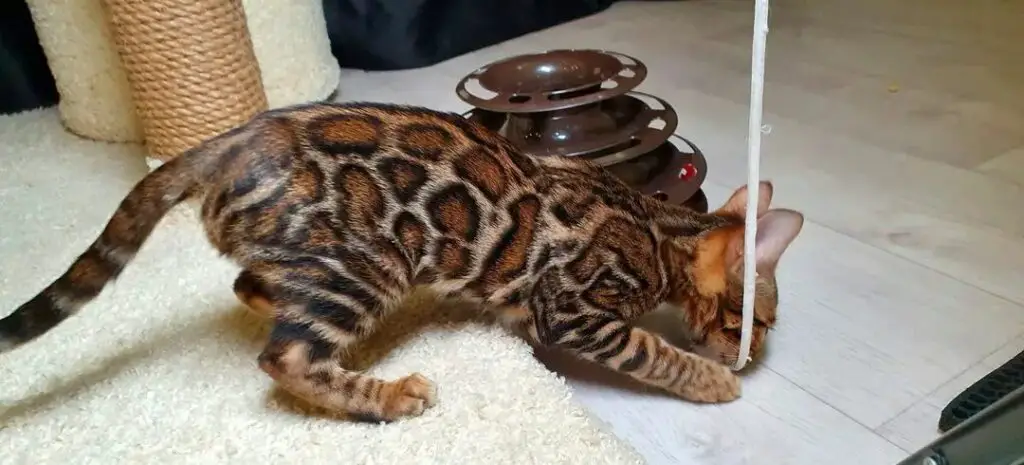
While playing is a natural behavior for cats, it can become problematic when they play too rough or exhibit aggressive behavior during play sessions.
The causes of rough play can include:
- Lack of socialization: Cats that did not have proper socialization during the critical period may not have learned appropriate play behaviors.
- Excess energy: Cats may engage in rough play when they have pent-up energy that needs to be released.
- Predatory instincts: Play behavior in cats often mimics hunting, which can involve pouncing, biting, and scratching.
To identify if your cat’s play behavior is too rough, look for the following signs:
- Biting, scratching, or attacking your hands or feet during play.
- Growling or hissing during play sessions.
- Leaving marks or scratches on your body after play.
Addressing and fixing this behavior problem:
- Provide appropriate toys: Offer interactive toys that allow your cat to engage in natural hunting behaviors without using your body as a target.
- Set playtime boundaries for your cat: Establish rules for playtime, such as not allowing biting or scratching during play. Reinforce positive play behavior with treats and praise.
- Consistent rewards and reinforcements: Reward your cat with praise and treats when they engage in gentle play and avoid rough behavior.
- Providing regular physical and mental stimulation for your cat: Ensure your cat receives plenty of exercise and mental stimulation through play, puzzle toys, and environmental enrichment.
- Seek professional help: If your cat’s rough play behavior persists or poses a safety concern, consult with a veterinarian or animal behaviorist.
Prevention:
- Early socialization: Expose kittens to other cats, different people, and various play experiences to help them learn appropriate play behavior.
- Consistent reinforcement: Encourage gentle play from the beginning and discourage rough behavior consistently to establish good habits.
- Provide outlets for energy: Engage your cat in regular interactive play sessions and provide scratching posts and climbing trees to help them expend energy.
Separation Anxiety
Cats can experience separation anxiety when they feel distressed or anxious when left alone.
The causes of separation anxiety can include:
Even though most cats can be independent of their owners, the majority of cats still experience separation anxiety when left alone.
- Changes in routine: Cats are creatures of habit and may become anxious when their routine is disrupted.
- Traumatic experiences: Cats that have experienced abandonment or traumatic incidents in the past may be more prone to separation anxiety.
- Overdependence on their owners: Cats that are overly attached to their owners may struggle with being alone.
To identify if your cat has separation anxiety, look for the following signs:
- Excessive vocalization or meowing when left alone.
- Destructive behavior, such as scratching furniture or urinating outside the litter box.
- Clinging behavior and following you around the house when you are preparing to leave.
Addressing and fixing the behavior problem:
- Gradual desensitization: Gradually increase the time you spend away from your cat, starting with short intervals and gradually lengthening them.
- Create a safe space: Provide a designated area with comforting items like bedding, toys, and a scratching post where your cat can retreat when alone.
- Establish a routine: Stick to a consistent schedule for feeding, playtime, and alone time to help your cat feel more secure.
- Use positive associations: Leave treats, puzzle toys, or calming pheromone diffusers in your cat’s safe space to create positive associations with being alone.
- Seek professional help: If your cat’s separation anxiety persists or worsens, consult with a veterinarian or animal behaviorist for additional guidance.
Prevention:
- Early socialization: Expose kittens to short periods of alone time from a young age to help them become accustomed to being alone.
- Gradual introductions: When introducing changes to your cat’s routine or environment, do so gradually to minimize stress and anxiety.
- Provide mental stimulation: Engage your cat in interactive play, puzzle toys, and environmental enrichment to keep their mind occupied.
Aggression
Aggression in cats is one of the most common behavior problems in cats and can manifest in various forms, such as hissing, growling, scratching, or biting.
The causes of aggression can include:
- Fear or defensive aggression: Cats may become aggressive when they feel threatened or cornered.
- Redirected aggression: Cats may redirect their aggression towards humans or other animals when they are aroused by a separate stimulus.
- Medical issues: Underlying medical conditions, such as pain or discomfort, can contribute to aggressive behavior.
To identify if your cat is exhibiting aggression, look for the following signs:
- Hissing, growling, or showing teeth when approached or touched.
- Swatting or biting without warning.
- Stiff body posture, flattened ears, or dilated pupils.
Addressing and fixing this behavior problem:
- Rule out medical causes: If your cat’s aggression is sudden or accompanied by other concerning symptoms, consult with a veterinarian to rule out any underlying medical conditions.
- Provide a safe environment for your cat: Create spaces where your cat can retreat to when they are feeling stressed or overwhelmed.
- Avoid punishment: Punishment can escalate aggression, so focus on positive reinforcement and reward-based training.
- Consult a professional: If your cat’s aggression persists or poses a safety concern, seek guidance from a veterinarian or animal behaviorist.
Prevention of this behavior problem:
- Providing early socialization: Expose kittens to different people, animals, and environments during their critical socialization period to help them develop appropriate behavior.
- Use Positive reinforcement techniques: Reward and praise your cat for calm and non-aggressive behavior to reinforce positive associations.
- Avoid triggers: Identify and minimize situations or stimuli that trigger aggression in your cat.
Conclusion
In summary, understanding and addressing behavior problems in cats is essential for a harmonious relationship with your cat.
By identifying the root causes and trying to fix them or seeking professional guidance, you can create a tailored plan to modify and manage these behaviors effectively.
Always keep in mind that, patience, consistency, and positive reinforcement are key in helping your cat live a happy and well-adjusted life.

